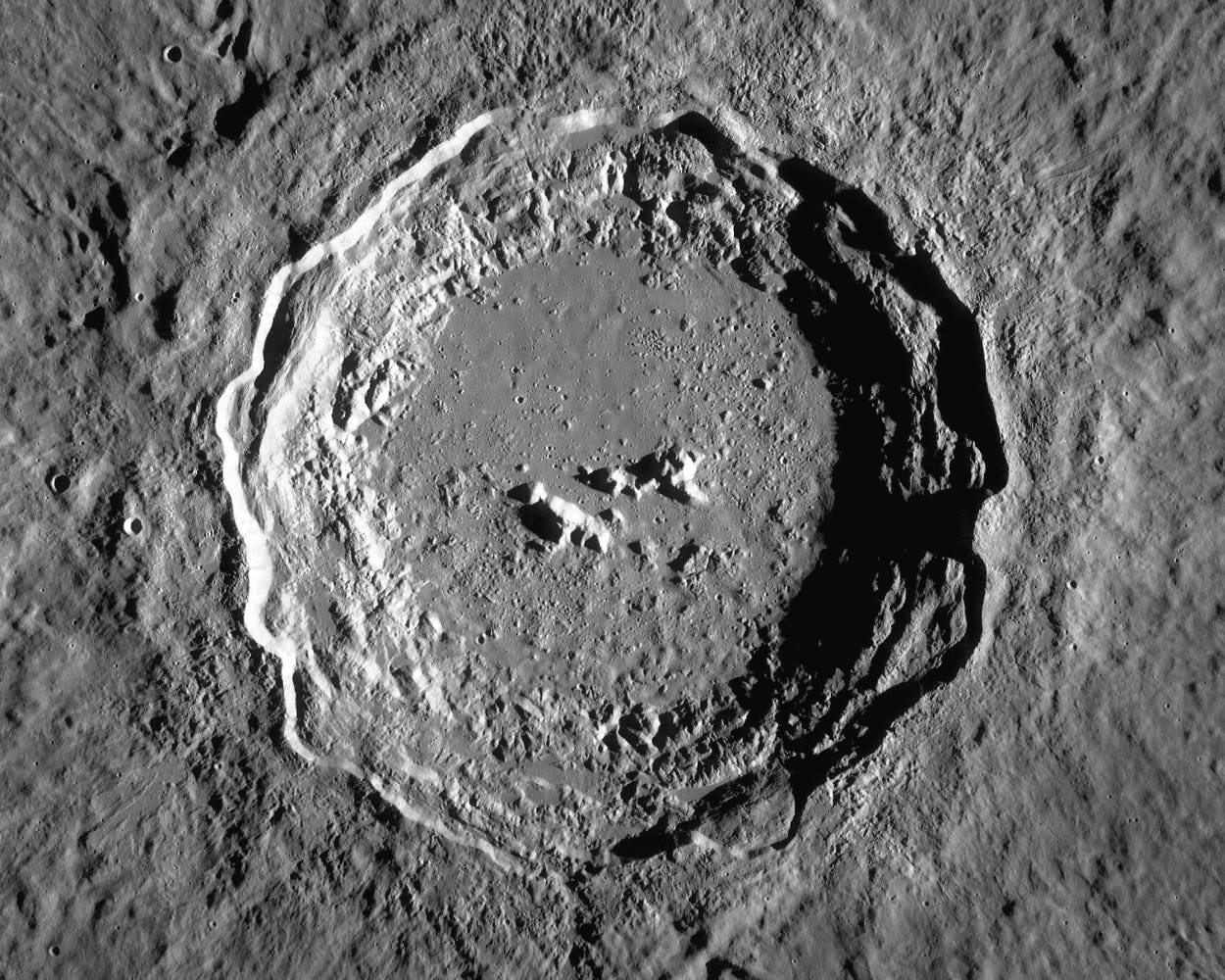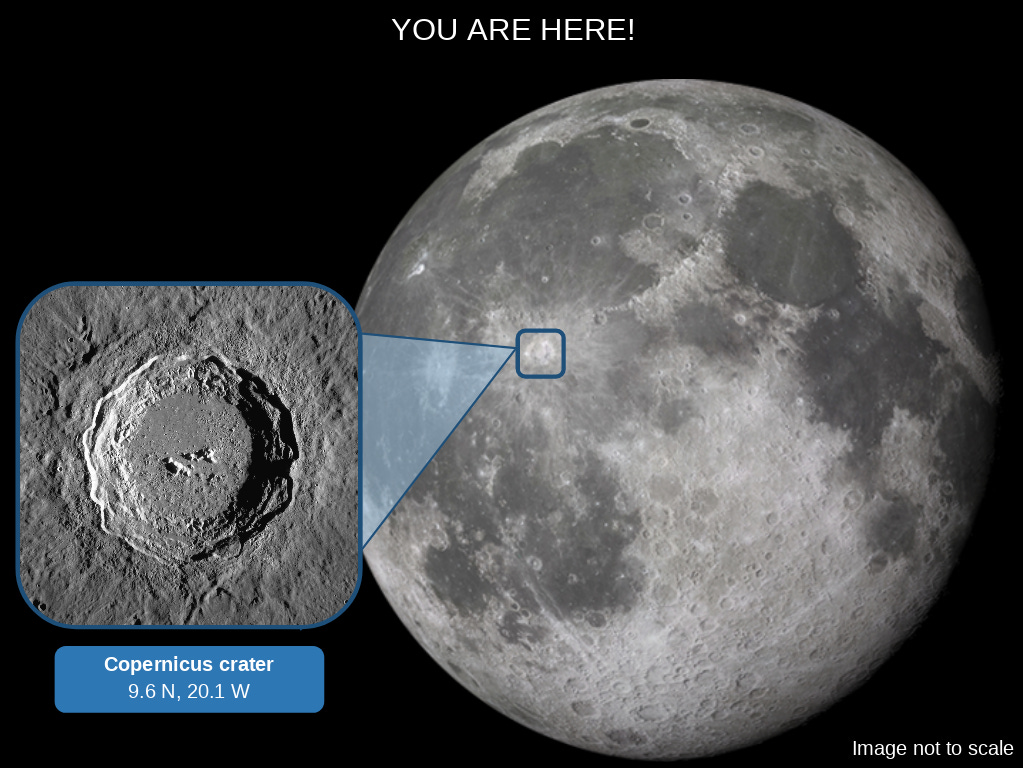A peek inside the Moon with Copernicus
A spectacular young crater with two central mountains.
Seen here is the spectacular Copernicus crater with its central peaks. They allow a peak (pun intended) into the lunar interior.

Copernicus is a (geologically) young crater, owing to its rocky walls and bright ejected material seen radiating out of the crater. In fact, all craters with bright ejecta (Tycho, Aristarchus, etc.) are part of the Copernican period, the lunar time period starting from the formation of crater Copernicus about 800 million years ago.
The impact that formed Copernicus must have been quite energetic. The impactor asteroid/comet slammed into the lunar surface creating the crater. The material underneath the central impact point melted and got compressed the most until it resisted the compression and bounced back up! Such materials excavated from the lunar interior rise up as mountains! Such is the beauty of lunar science.
Studying composition of material in central peaks of craters is key to understanding the Moon's interior. Which is why Copernicus crater was a candidate landing site of the now cancelled Apollo 17+ missions and also a Constellation Region of Interest.

